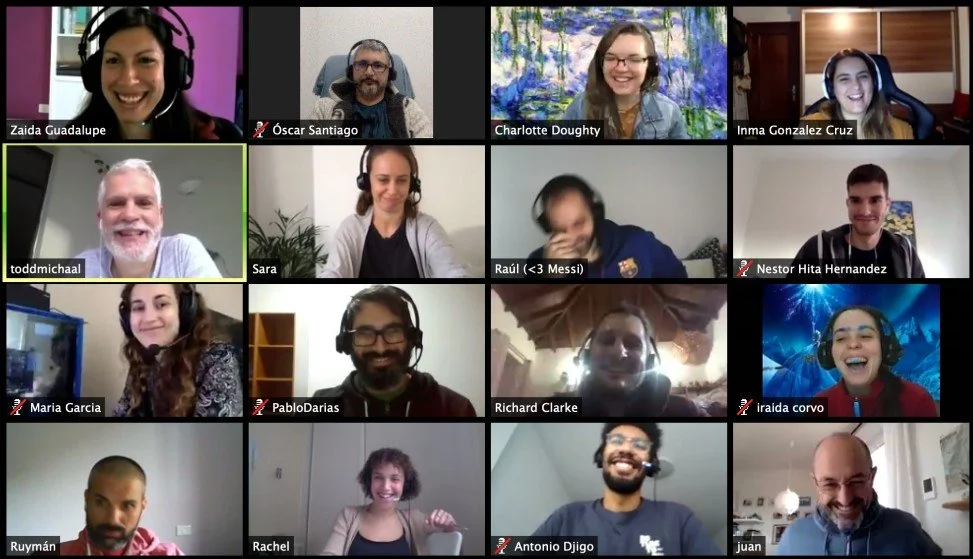The secret of innovation? Failing … A LOT.
When lockdown began in March 2020, we were all sent home from our comfortable offices with just a day’s notice. It’s crazy when you think back on it. One day we were chatting with colleagues every day; the next, we were locked in our homes and told not to leave.
At the time, our company had a really close team. Everyone got on, and we all worked together like friends. We didn’t want to lose that connection, so from day one we set out to recreate the feeling of the office at home.
Our first idea was a morning game. Every day from 9:00 to 9:30, the whole team logged on to play together. Pictionary, online jigsaws, dance classes. Each day a different person ran the session. Some were excellent. Some were not. But everyone had a go, and everyone knew we’d all be grateful however well the session went.
After a month we reduced the calls to three times a week. A month later, once a week. And after a couple of months, we stopped them altogether. They hadn’t really worked.
At no point during those two months did anyone complain, criticise, or give “feedback”. Quite the opposite. Even after a toe-curling Britney Spears dance class, we still said thank you and high-fived the organiser.
The result? We probably tried fifty activities, and even though almost all failed, in the process, we discovered how to really maintain real community online. We learnt that you don’t need gimmicks, you just need time to chat and a place to do it. In the end we just ran random coffees and opened up all meetings ten minutes earlier to give people a place and permission to “chat”.
And, even though we were a software company, for years after, we were hired by businesses around the world to teach them how to keep their teams connected remotely.
Ben & Jerry’s though takes innovation to another level. They actually celebrate failures as a way of motivating their teams to try new things without fear of failure.
Their Chunky Monkey, Cookie Dough and Phish Food are household names. But they weren’t the result of one-off brilliance. They came from years of trial and error, and plenty of flops. Ever heard of Dastardly Mash or Schweddy Balls?
Failing isn’t easy. It’s demotivating when something you create doesn’t succeed. Yet the best innovations often come after multiple failures, so the trick is to make failure feel like success.
Ben & Jerry’s has an Ice Cream Graveyard. An actual graveyard with actual tombstones for their failed flavours. You try something weird and it fails, you don’t get criticised or ignored, you get the honour of a place in their famous graveyard.
One of the biggest contributors to workplace happiness is knowing you won’t be blamed for trying something that doesn’t work. When people feel safe to fail, they feel trusted and feel they have greater autonomy.
There are many ways to build a non-blame culture, but one of the simplest is for leaders to model it.fphis
Tip of the week:
Start your next team meeting by sharing something you failed at this week. Tell your team what went wrong and show them it’s OK. By normalising failure, you show them that perfection isn’t the goal, progress is.
Power tip:
Make it a weekly habit. Start each team meeting with a “what I failed at this week” where everyone shares one thing that didn’t go to plan either at work or home.
According to the US Surgeon General, there are five essentials for workplace wellbeing. Feeling safe and having autonomy are two of them. Knowing that you can make mistakes without fear of blame goes a long way towards both.
Follow the blog
I regularly write on how you can use the science of happiness and the science of wellbeing to improve team performance. Sign up now to receive the latest blog posts in your inbox.




